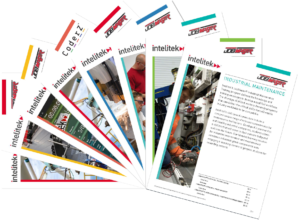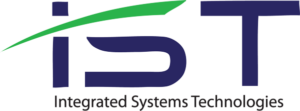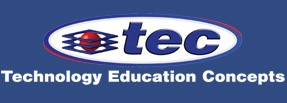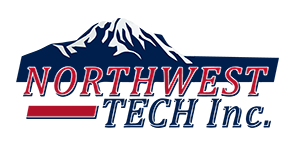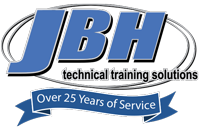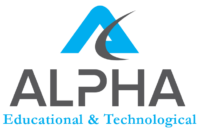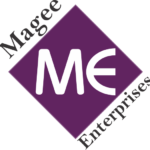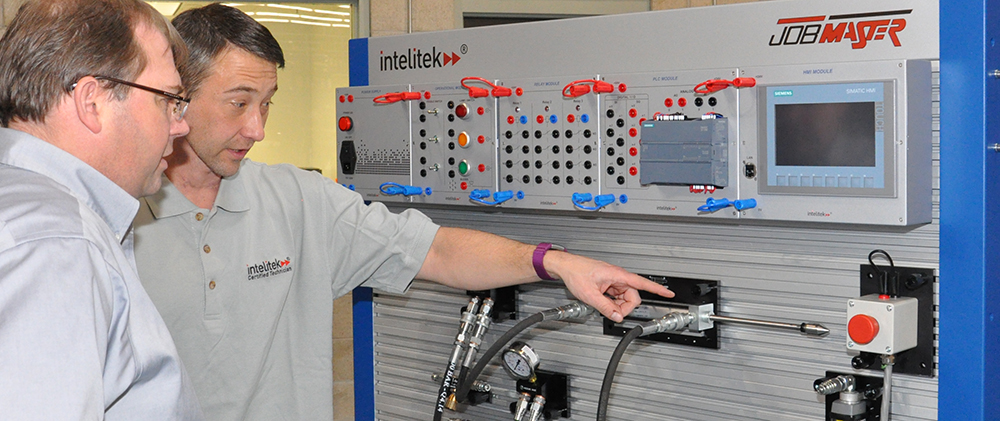
Intelitek Hydraulic Technology curriculum introduce students to the principles of hydraulics and hydraulically controlled systems commonly used in automated manufacturing environments. Using Hydraulic simulation software, trainees create, modify, operate and observe simulated industrial grade hydraulic and electro-hydraulic devices and circuits. Students will connect different components, change physical parameters and observe system responses.
Curriculum
The Hydraulics Technology 1 course introduces students to the principles of hydraulics and the use of fluid power in automated manufacturing environments. Students create, modify and operate hydraulic and electro-hydraulic circuits. Using industrial components, students conduct applied science experiments to demonstrate the physical principles of fluid power.
Students first test and troubleshoot simulated circuits then use the integrated hardware components to design solutions for industrial hydraulic applications with emphasis on relevant industrial challenges, such as power losses across components, system overheating and optimizing hydraulic power.
Course Outline
- Activity 1: Getting Started
- Activity 2: Pressure and Force
- Activity 3: Pressure Gauges
- Activity 4: Hydraulic Power Transmission – Part 1
- Activity 5: Hydraulic Power Transmission – Part 2
- Activity 6: Hydraulic Power Source
- Activity 7: Determining Component Characteristics
- Activity 8: Controlling the Flow Rate
- Activity 9: Flow Control Valves
- Activity 10: 4/3 Closed-Center Valve – Construction and Function
- Activity 12: Power Transformation Using a Double-Acting Cylinder
- Activity 13: Loading a Piston
- Activity 14: Controlling the Piston Location
- Activity 15: Conclusion
In the Hydraulics Technology 2 course students create, modify, operate and observe simulated hydraulic and electro-hydraulic devices and circuits. They also have the opportunity to configure and connect simulated components to create a variety of applications, changing physical parameters and observing system responses.
In the lab, students use the training panel with a wide assortment of industrial grade hydraulic components. Students mount and configure components on the panel in order to create a variety of applications. Students connect different components, change physical parameters and observe system responses. The combination of software and industrial equipment allows students to test and troubleshoot simulated circuits before hardware connections are made.
Students design solutions for industrial hydraulic applications with emphasis on real industrial concerns, such as power losses across components, system overheating and optimized hydraulic power.
Course Outline
- Activity 1: Getting Started
- Activity 2: Mechatronics and Hydraulic Systems
- Activity 3: Building a Dowel Insertion System
- Activity 4: Controlling a Hydraulic Press
- Activity 5: Controlling a Barricade
- Activity 6: Sequential Operation
- Activity 7: Grain Gate Valves
- Activity 8: Controlling a Cargo Airplane Door
- Activity 9: Increasing System Efficiency
- Activity 10: The Relay
- Activity 11: Latching a Relay
- Activity 12: Semi-Automatic Press System
- Activity 13: The Timer
- Activity 14: Irrigation System
- Activity 15: Improving Control in a Circuit with Sequential Operation
The Hydraulics Technology 3 course introduces students to advanced hydraulics and electro-hydraulics and the use of fluid power in automated manufacturing environments. Students use software to create, modify, operate and observe simulated hydraulic and electro-hydraulic devices and circuits.
Course Outline
- Activity 1: Hydraulic Systems Usage and Control
- Activity 2: Electrical Control Signals
- Activity 3: Controlling Piston Speed
- Activity 4: Non-Return Pilot Valve
- Activity 5: Bi-Directional Motor
- Activity 6: Pressure Relief Valve
- Activity 7: 4/3 Closed Center Valve vs 4/3 Tandem Center Valve
- Activity 8: Simultaneous Operation of Two Components
- Activity 9: Controlling Two Actuators Using Two Valves
- Activity 10: Roller Valves
- Activity 11: Limit Switch
- Activity 12: Sequence Valve
- Activity 13: Sequential Operation
- Activity 14: Pressure-Reducing Valve
- Activity 15: Latching a Relay
- Activity 16: Timers
- Activity 17: Automatic Cycle
The Hydraulics Technology 1 course introduces students to the principles of hydraulics and the use of fluid power in automated manufacturing environments. Students create, modify and operate hydraulic and electro-hydraulic circuits. Using industrial components, students conduct applied science experiments to demonstrate the physical principles of fluid power.
Students first test and troubleshoot simulated circuits then use the integrated hardware components to design solutions for industrial hydraulic applications with emphasis on relevant industrial challenges, such as power losses across components, system overheating and optimizing hydraulic power.
Course Outline
- Activity 1: Getting Started
- Activity 2: Pressure and Force
- Activity 3: Pressure Gauges
- Activity 4: Hydraulic Power Transmission – Part 1
- Activity 5: Hydraulic Power Transmission – Part 2
- Activity 6: Hydraulic Power Source
- Activity 7: Determining Component Characteristics
- Activity 8: Controlling the Flow Rate
- Activity 9: Flow Control Valves
- Activity 10: 4/3 Closed-Center Valve – Construction and Function
- Activity 12: Power Transformation Using a Double-Acting Cylinder
- Activity 13: Loading a Piston
- Activity 14: Controlling the Piston Location
- Activity 15: Conclusion
In the Hydraulics Technology 2 course students create, modify, operate and observe simulated hydraulic and electro-hydraulic devices and circuits. They also have the opportunity to configure and connect simulated components to create a variety of applications, changing physical parameters and observing system responses.
In the lab, students use the training panel with a wide assortment of industrial grade hydraulic components. Students mount and configure components on the panel in order to create a variety of applications. Students connect different components, change physical parameters and observe system responses. The combination of software and industrial equipment allows students to test and troubleshoot simulated circuits before hardware connections are made.
Students design solutions for industrial hydraulic applications with emphasis on real industrial concerns, such as power losses across components, system overheating and optimized hydraulic power.
Course Outline
- Activity 1: Getting Started
- Activity 2: Mechatronics and Hydraulic Systems
- Activity 3: Building a Dowel Insertion System
- Activity 4: Controlling a Hydraulic Press
- Activity 5: Controlling a Barricade
- Activity 6: Sequential Operation
- Activity 7: Grain Gate Valves
- Activity 8: Controlling a Cargo Airplane Door
- Activity 9: Increasing System Efficiency
- Activity 10: The Relay
- Activity 11: Latching a Relay
- Activity 12: Semi-Automatic Press System
- Activity 13: The Timer
- Activity 14: Irrigation System
- Activity 15: Improving Control in a Circuit with Sequential Operation
The Hydraulics Technology 3 course introduces students to advanced hydraulics and electro-hydraulics and the use of fluid power in automated manufacturing environments. Students use software to create, modify, operate and observe simulated hydraulic and electro-hydraulic devices and circuits.
Course Outline
- Activity 1: Hydraulic Systems Usage and Control
- Activity 2: Electrical Control Signals
- Activity 3: Controlling Piston Speed
- Activity 4: Non-Return Pilot Valve
- Activity 5: Bi-Directional Motor
- Activity 6: Pressure Relief Valve
- Activity 7: 4/3 Closed Center Valve vs 4/3 Tandem Center Valve
- Activity 8: Simultaneous Operation of Two Components
- Activity 9: Controlling Two Actuators Using Two Valves
- Activity 10: Roller Valves
- Activity 11: Limit Switch
- Activity 12: Sequence Valve
- Activity 13: Sequential Operation
- Activity 14: Pressure-Reducing Valve
- Activity 15: Latching a Relay
- Activity 16: Timers
- Activity 17: Automatic Cycle
Hardware Training Kits
The hydraulics training kits give students complete hands-on experience in the design and construction of hydraulic circuits commonly used in industrial applications. Students can mount and configure components on the JobMaster Training Station to create a variety of hydraulic or electro-hydraulic circuits.
JMTS- H1 Kit for Hydraulics 1
- 1 Double-acting Cylinder 1-1/8”
- 1 4/3 selector valve, closed center
- 1 Two-way flow control valve
- 2 One-way flow control valves
- 1 Pressure relief valve
- 1 Flow meter
- 2 Pressure gauges
- 2 T-connectors
- 10 Hydraulic hoses, various sizes
- Hex wrench
- 1 Funnel
- 2 Gallons hydraulic oil
JMTS- H2 Kit for Hydraulics 2
- Double-acting cylinder, diameter 3/4”
- 4/3 selector valve, open center (4/3 directional valve, open center)
- Pressure reducing valve
- Manifold (x2)
- Coiled hoses
- Temperature gauge
- Hoses: 80 cm (x2)
JMTS- H3 Kit for Hydraulics 3
- 4/3 double solenoid valve (4/3 sol-sol valve, tandem center)
- 2/2 solenoid valve (2/2 sol-spring valve)
- Magnetic sensors (x3)
- Banana plug cables (14 total), assorted colors and lengths: red, black, gray; 610 mm (24”), 1220 mm (48”)
- Electric distributor
Required JMTS Training Station Electronics Units
- JMTS – Power Supply Module
- JMTS – PLC Module
HydraMotion
HydraMotion software is a computer-aided design tool that teaches students how to design and operate hydraulic and electro-hydraulic circuits. HydraMotion enables the study of hydraulics principles and technology. The software’s HMI animation provides an accurate working simulation of hydraulic devices and circuits.
Users can change the default parameters of the hydraulic components, such as cylinder diameter and pump flow. Software algorithms adjust the system’s response to present a realistic hydraulic system response. The system’s hoses are considered ideal and there is no pressure drop on lines drawn by the user.
In addition to simulation of virtual circuits, HydraMotion can control actual electro-hydraulic circuits. When connected to the JMTS training panel, the software provides on-line graphic tracking of circuits in operation. (Requires computer interface control unit)

